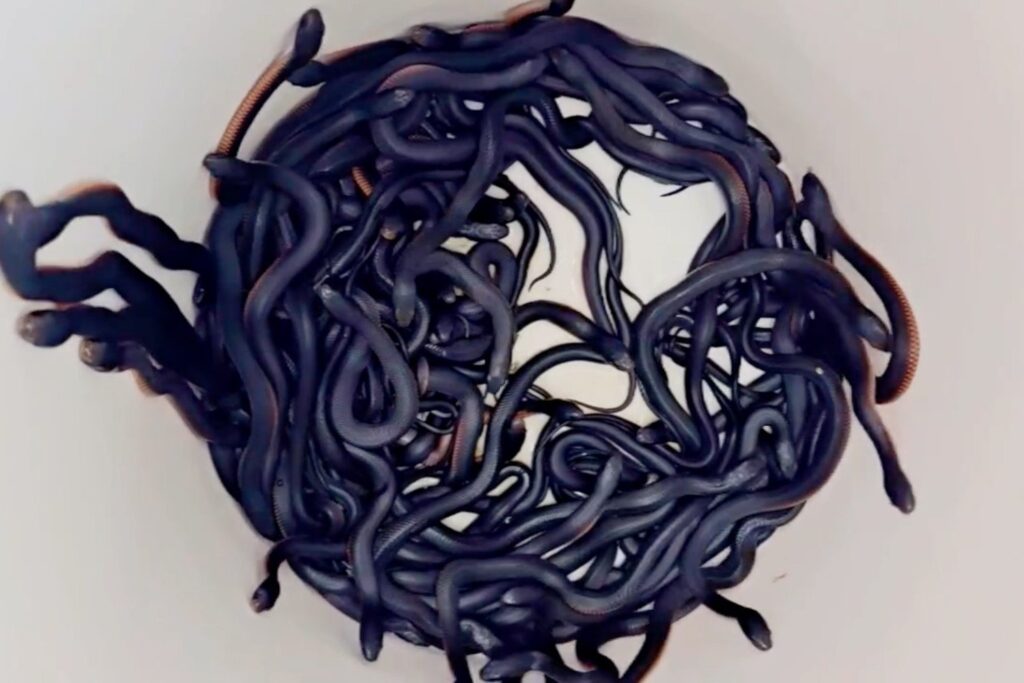An Australian man’s recent discovery of snakes in his backyard turned out to be more than he bargained for. Local animal wranglers reported retrieving over 100 venomous red-bellied black snakes from the man’s premises.
Cory Kerewaro, owner of Reptile Relocation Sydney, detailed the scaly scary tale on his company’s Facebook page earlier this week. According to the post, David Stein called for the company’s help after he spotted what seemed to be six of these snakes slithering into a large mulch pile on his property in western Sydney. It proved to be a vast underestimate. Thankfully, the reptiles were safely removed and relocated with no issue.
Red-bellied black snakes (Pseudechis porphyriacus) are native to Australia, their range typically extending along the eastern coast of the country. But while they are commonly encountered by people, this particular sighting was still plenty unusual.

As it turns out, the snakes on Stein’s property were getting ready to give birth just as he called the reptile relocators. These snakes are ovoviviparous, meaning they give live birth to young that are kept in eggs within their body. So by the time Kerewaro’s snake catcher, Dylan Cooper, was sent to the property, the snakes’ numbers had begun to explode.
Cooper, Stein, and Stein’s son initially wrangled 40 snakes from the mulch pile, only to have four of the adults start having their own kids on their way to being relocated. The team recovered five adults and a whooping 97 babies, making for 102 snakes in total. Kerewaro posted a video on Facebook showing all the snakes gathered together.
“The quantity is a shock. We do have red-belly snakes in the backyard—you’ll see one slither away into the creek— but not a great deal,” Stein told the Guardian Thursday.
Red-bellied black snakes are venomous, and Stein’s dog was unfortunately bitten by a juvenile snake in December. Their bites are painful and can often cause other systematic symptoms like nausea, vomiting, and headache. But they generally shy away from humans and are unlikely to bite unless provoked. They’re also less venomous than other commonly seen snakes in the region, and no recorded human deaths seem to have been linked to their bite.
In accordance with local law, the maternity den of snakes was safely relocated to a remote area not too far from Stein’s home. And Kerewaro has already gotten in touch with snake researchers interested in their discovery. Finding 102 of these snakes at once is certainly a company record, and it may very well be a record scientifically, too. Kerewaro has also promised to release more high quality images and videos of the snakes.
“We’re contributing to helping people understand these animals—it’s pretty rewarding,” he told the Guardian.
Frightening as this find may have been at first, it could have been worse. Just last month, a woman in Texas was unlucky enough to have reportedly found and been bitten by an actual toilet snake in her bathroom.







